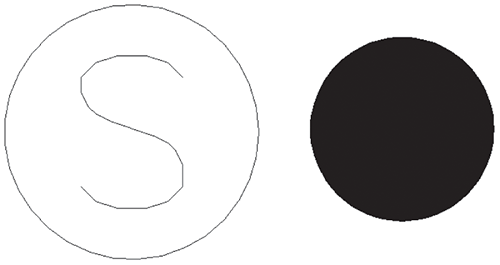Planning a Typical Pipe Network
Before you begin designing a pipe network, it’s important to brainstorm all of the parts you’ll need to construct the network, how these objects will be represented in plan and profile, and the behavior of these parts (which you’ll specify using the slope, cover, rim, and sump parameters). Once you have a list of the elements you need, you can locate the appropriate parts in the part catalog, build the appropriate rule sets, create the proper styles to match your CAD standard, and tie it all together in a parts list.
Let’s look at a typical sanitary sewer design. You typically start by going through the sewer specifications for the jurisdiction in which you’re working. There is usually a published list of allowable pipe materials, manhole details, slope parameters, and cover guidelines. Perhaps you have concrete and PVC pipe manufacturer catalogs that contain pages of details for different manholes, pipes, and junction boxes. There is usually a recommended symbology for your submitted drawings—and, of course, you have your own in-house CAD standards. Assemble this information, and make sure you address these issues:
- Recommended structures, including materials and dimensions (be sure to attach detail sheets)
- Structure behavior, such as required sump, drops across structures, and surface adjustment
- Structure symbology
- Recommended pipes, including materials and dimensions (again, be sure to attach detail sheets)
- Pipe behavior, such as cover requirements; minimum, maximum, and recommended slopes; velocity restrictions; and so on
- Pipe symbology
The following is an example of a completed checklist:
Sanitary Sewers in Sample County
Recommended Structures: Standard concentric manhole, small-diameter cleanout.
Structure Behavior: All structures have 1.5′ (0.46 m) sump, rims, a 0.10′ (0.03 m) invert drop across all structures. All structures designed at finished road grade.
Structure Symbology: Manholes are shown in plan view as a circle with an S inside and a diameter that corresponds to the actual diameter of the manhole. Cleanouts are shown as a solid, filled circle with a diameter that corresponds to the actual diameter of the cleanout. (See Figure 13-1.)
Figure 13-1: Sanitary sewer manhole in plan view (left) and a cleanout in plan view (right)

Manholes are shown in profile view with a coned top and rectangular bottom. Cleanouts are shown as a rectangle (see Figure 13-2).
Figure 13-2: Profile view of a sanitary sewer manhole (left) and a cleanout (right)

Recommended Pipes: 8″ (20.32 cm), 10″ (25.4 cm), and 12″ (30.48 cm) PVC pipe per manufacturer specifications.
Pipe Behavior: Pipes must have cover of 4′ (1.22 m) to the top of the pipe; the maximum slope for all pipes is 10 percent, although minimum slopes may be adjusted to optimize velocity as follows:
| Sewer Size | Minimum Slope |
| 8″ (20.32 cm) | 0.40% |
| 10″ (25.4 cm) | 0.28% |
| 12″ (30.48 cm) | 0.22% |
Pipe Symbology: In plan view, pipes are shown with a CENTER2 linetype line that has a thickness corresponding to the inner diameter of the pipe. In profile view, pipes show both inner and outer walls, with a hatch between the walls to highlight the wall thickness (see Figure 13-3).
Figure 13-3: Sanitary pipe in plan view (a) and in profile view (b)

